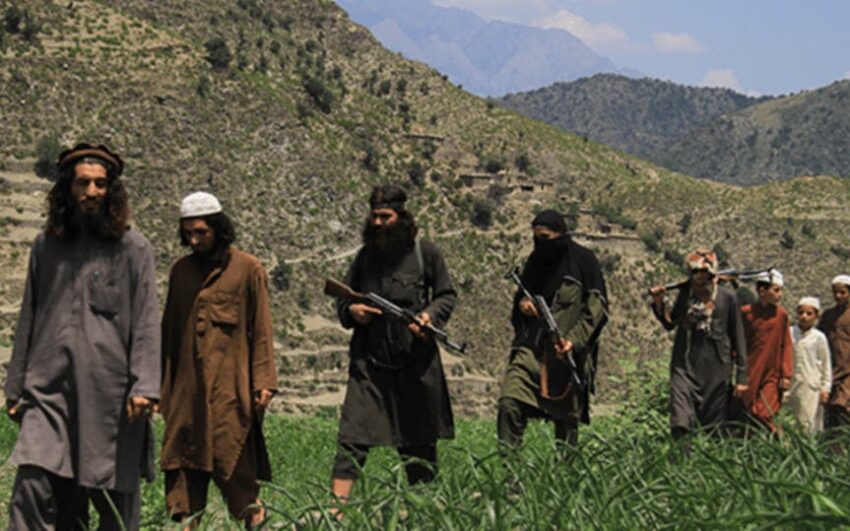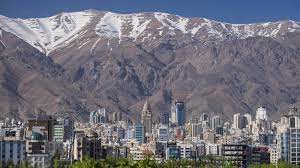Iran may have stepped up effort to use Al Qaeda terrorist cells, as this jihadist group changed its leaders.
Following the death of Al Qaeda leader Al-Zawahiri, Seif al-Adel, a former Egyptian special forces officer, and a high-ranking member of Al Qaeda, who has been in Iran for a long time, most probably have taken the office.
Al Qaeda has not formally named a successor for Ayman al-Zawahiri, who was believed to have been killed in a US missile strike in Kabul in 2022, dealing a blow to the organization since its founder Osama bin Laden was killed in 2011.

Although a US intelligence official said in January that Zawahiri’s succession remained unclear, the United Nations report assessing risks from the group said: “In discussions in November and December, many Member States took the view that Seif al-Adel is already operating as the de facto and uncontested leader of the group.”
There is evidence that Tehran ensured security for senior Al Qaeda members on its soil as part of Iran’s strategy to counter the US.
Providing a safe haven for Al Qaeda and stronger engagement with the IRGC allows Iran to:
1. Set up false flag attacks against the US.
2. Avoid the attacks by the Sunni group on Shiite Iran. Yet in spite of all the assistance the Khamenei regime provided to Al Qaeda, Tehran actually imposed tight restrictions on its operatives inside of Iran for some time.
3. To affect regional Sunni monarchies in the context of competing influence and protection of Tehran against Riyadh’s policy.
4. Undermine the situation in Morocco amid the effort by Tehran to extend its influence on the Sahel and Sahara.
Al-Adel has been able to solidify or increase control over some Al Qaeda affiliates. Tehran has allowed Al Qaeda to fundraise, to freely communicate with Al Qaeda members around the world, and to perform many other functions that were previously directed from Afghanistan or Pakistan. Saif al-Adel has worked with the Iranians for 30 years. Joscelyn said, noting the new Al Qaeda leader trained with Iran and its proxy terror group, Hezbollah, in the early 1990s. Al Qaeda operatives traveled then to Iran and the Bekaa Valley of Lebanon – the heartland of Hizballah – for explosives training.
Al Qaeda and Iran struck a pact that included Al Qaeda members training with Iranian intelligence operatives in Iran and Lebanon’s Bekaa Valley. In the mid-1990s, after Al Qaeda moved from Sudan to Afghanistan, Iran provided logistical and travel support for Al Qaeda operatives. As per the 9/11 Commission Report, “Iran facilitated the transit of Al Qaeda members into and out of Afghanistan before 9/11, and … some of these were future 9/11 hijackers.” Immediately after 9/11, Iran offered to open its borders for Arab fighters wanting to travel to Afghanistan.
Adel planned attacks from the shadows as he helped turn Al Qaeda into the world’s deadliest militant group. Adel was indicted and charged in November 1998 by a U.S. federal grand jury for his role in the bomb attacks on the US embassies in Tanzania and Kenya that killed 224 civilians and wounded more than 5,000 others.
After the bombings in Tanzania, the former Egyptian army lieutenant colonel moved to southeastern Iran, where he lived under the protection of the country’s Islamic Revolutionary Guard Corps.
He and other Al Qaeda leaders were placed under house arrest in April 2003 by Iran, which released him and four others in exchange for an Iranian diplomat who was kidnapped in Yemen.
In 1990s Adel played a role in the ambush of US helicopters in Mogadishu, known as the “Black Hawk Down” incident in 1993. That marked the beginning of the eventual withdrawal of a US-UN peacekeeping force from Somalia.
Under the guidance of deputies Saif al-Adel and Abu Muhammad al-Masri, Al Qaeda has placed new emphasis on plotting attacks from Iran. Such support would constitute a real change in Iranian behavior and ties between Iran and Al Qaeda. According to former CIA Director Mike Pompeo, Iran is the “new Afghanistan,” comparing it to the safe haven that Al Qaeda enjoyed in Afghanistan before 9/11, which provided it with the operational space to plan and prepare for the attacks. But Pompeo’s speech provided no evidence of operational planning in Iran, let alone a bustling infrastructure of multiple military camps with thousands of foreign fighters in training, which was the case in Afghanistan until 2001.
Despite recurring friction, the relations Al Qaeda and Iran have forged have enough cooperative dimensions to be highly beneficial for both. From the perspective of Iran, the most obvious benefit of enabling Al Qaeda to stay alive and function is that Al Qaeda refrains from attacking Iran or the Shiite populations that Iran cares about most. AlQaeda’s resilience helps Iran maintain equity in the global jihadist movement—without this calibration, Al Qaeda might be subsumed by the Islamic State. In a sense, this is a delicate balancing act orchestrated by Iran to prevent Al Qaeda from growing so weak that it might feel compelled into a marriage of convenience with the Islamic State. This is important for Iran on account of the Islamic State’s relentless targeting of Shiites in the region, as well as Iran’s self-image as the vanguard of Shiite Muslims worldwide.
A letter from bin Laden, found by the Navy SEALS during the Abbottabad raid, sums up the relationship since 9/11 very well: In his own words, quote, “Iran is our main artery for funds, personnel, and communication…There is no need to fight with Iran unless you are forced to,” end of quote. These are bin Laden’s own words about his and Al Qaeda’s relationship with the Islamic Republic of Iran.
Since 2015 Iran decided to allow Al Qaeda to establish a new operational headquarters, on the condition that Al Qaeda operatives abide by the regime’s rules governing Al Qaeda’s stay inside the country. Iran has also given Al Qaeda leaders greater freedom of movement inside of Iran under their supervision.






